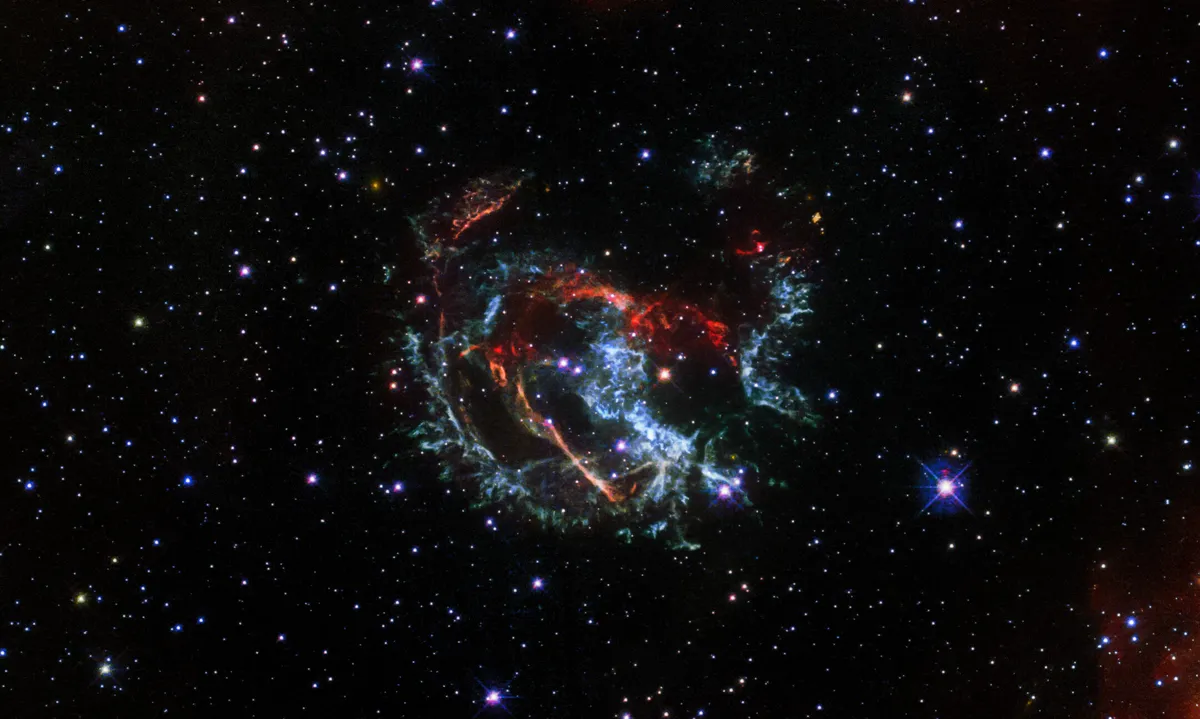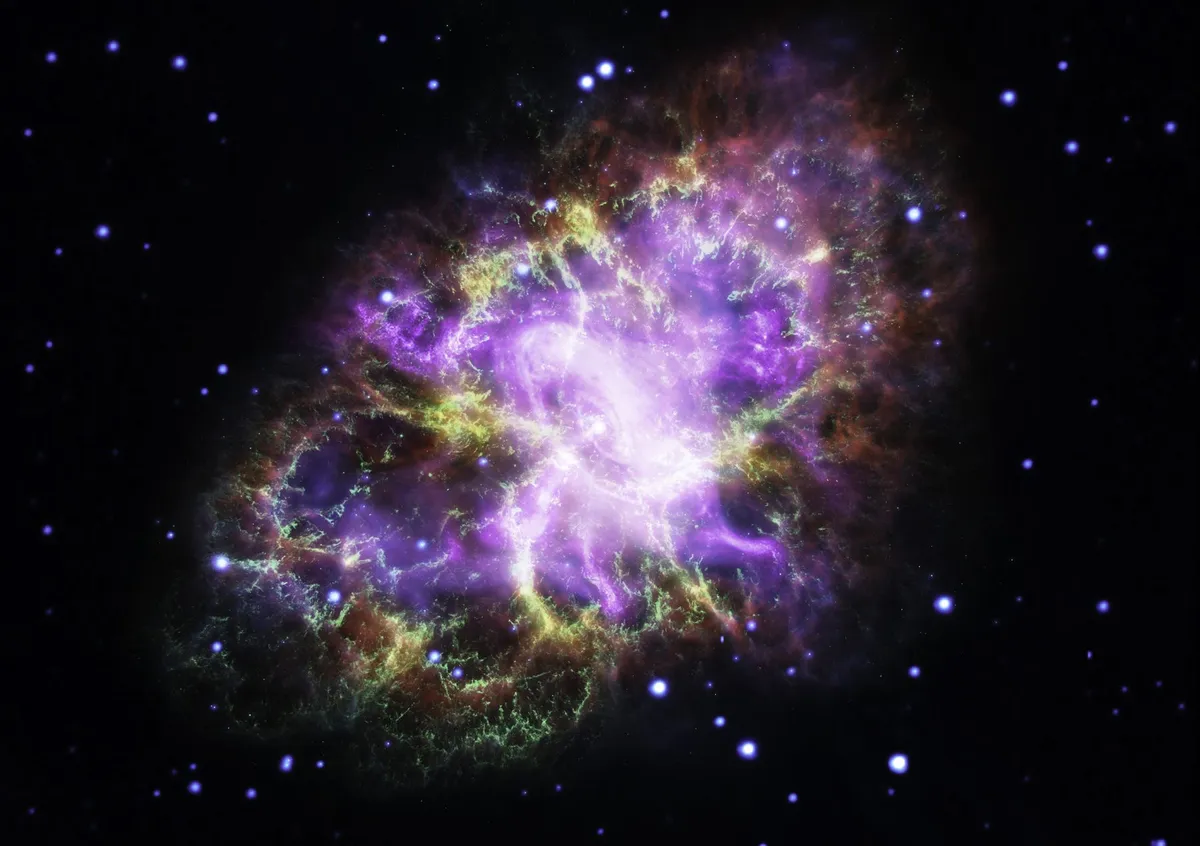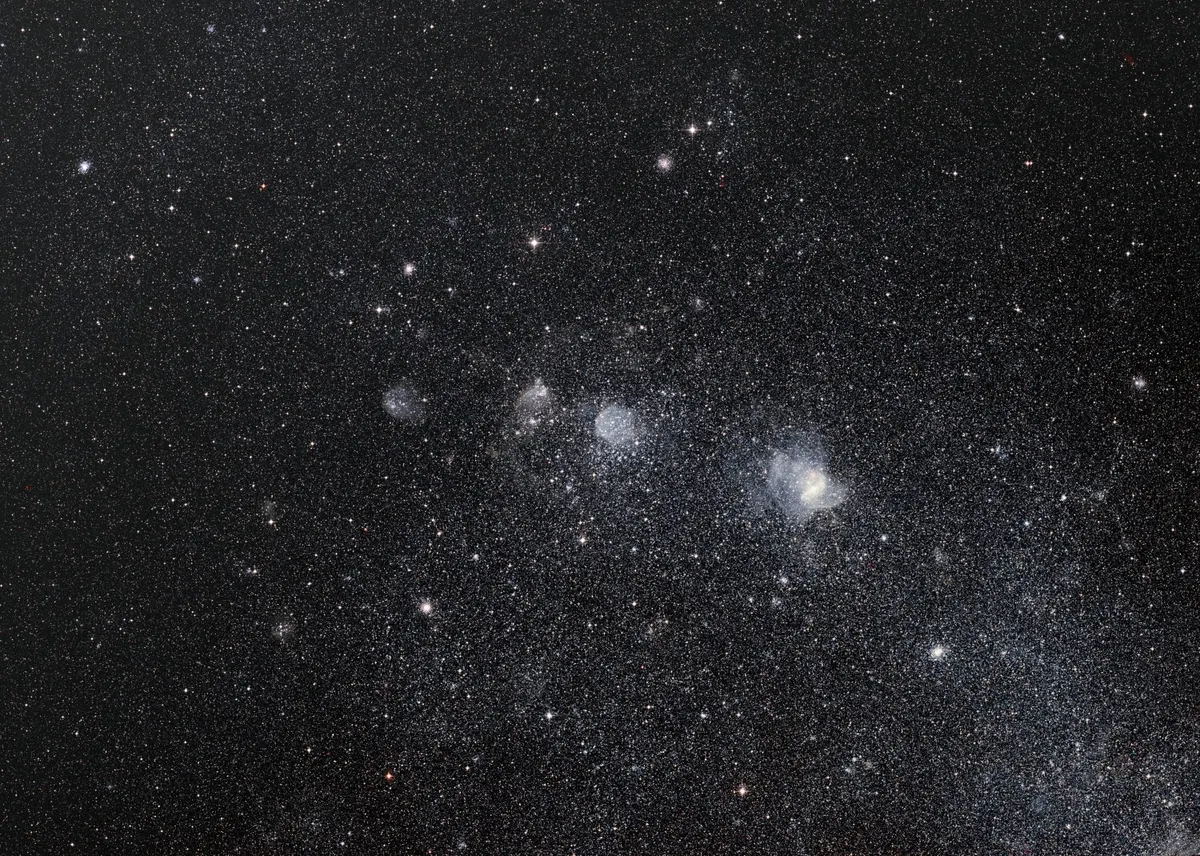
Astronomers have used the Hubble Space Telescope to observe a supernova remnant 200,000 lightyears from Earth in the Small Magellanic Cloud, a satellite galaxy of our own Milky Way.
But what is a supernova remnant, and what can their study tell us about the Universe?

When stars much more massive than the Sun reach the end of their lives, they begin to burn through their remaining hydrogen fuel, eventually collapsing under the weight of their own gravity and exploding in an event known as a supernova.
This is the fate of stars 1.4 times the mass of our Sun, and more massive.
Because these events are so difficult to predict, astronomers struggle to observe them in real time, but what they can do instead is study the aftermath: so-called ‘supernova remnants’.
The most famous of these, perhaps, is the spectacular Crab Nebula.

This latest Hubble image shows 1E 0102.2-7219, a supernova remnant 200,000 lightyears away in which gas is being ejected into space an average speed of 3.2 million km per hour.
Astronomers are using Hubble data to calculate the age and central location of the stellar explosion.
New estimates suggest light from the supernova first reached Earth about 1,700 years ago, around the time of the decline of the Roman Empire.When we look into space, we are really looking back in time.
This estimate was arrived at by studying oxygen-rich clumps of matter ejected in the blast. Astronomers traced the clumps’ motions backward to the point of coalescence, which enabled them to identify the explosion site.
They were then able to calculate how long it would have taken for the clumps to arrive at their current location.

Hubble data was also used to measure the speed of a suspected neutron star, which is the condensed remains of the dead star behind the explosion.
The data revealed it must be travelling at over 3 million km per hour from the centre of the explosion.
By studying supernova remnants like these, astronomers can build up a vivid picture of cosmic events and gain real insight into processes occurring across the Universe.
Image stats
Observatory Hubble Space Telescope
Release date 15 January 2021
Image credit NASA, ESA, and J. Banovetz and D. Milisavljevic (Purdue University)
